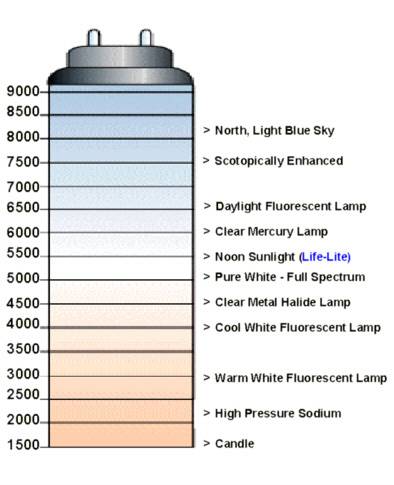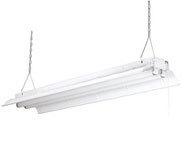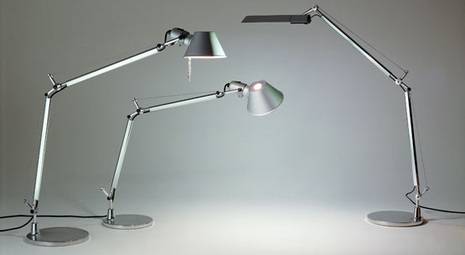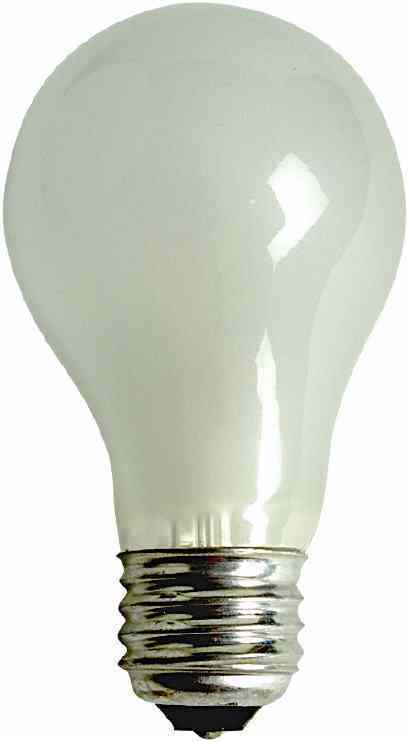No matter what your skill, medium, or project of choice, you’ve got to be able to see what you’re doing.
Foot Candles: Lighting quantity or intensity is measured in foot-candles (fc). So states Wikipedia, “The unit is defined as the amount of illumination the inside surface an imaginary 1-foot radius sphere would be receiving if there were a uniform point source of one candela in the exact center of the sphere. Alternatively, it can be defined as the illuminance on a 1-square foot surface of which there is a uniformly distributed flux of one lumen. This can be thought of as the amount of light that actually falls on a given surface. The foot-candle is equal to one lumen per square foot.” Standard tasks require about 30fc, and reading should be accomplished under 50fc. Doing creative and artistic or DIY tasks – such as sewing, knitting, woodworking, painting, etc. should be done with 75 or 100 fc.
Color Temperature: All bulbs are rated based on the color of light they emit. Light color is measured in degrees Kelvin (K).
Spec 35,40, or 50: 3,500-5,000 K Good for task lighting
Cool White: 4,100 K Reasonable for general lighting
Natural Sunshine: 5,000 K Great for general lighting
Daylight Deluxe: 6,500 K Very Bright (may be too bright for a small space)

Color Rendering is the accuracy of how well a bulb shows the colors it illuminates. The Color Rendering Index (CRI) rates a bulb from 0-100. Look for bulbs rated at least 75 or higher, such as Natural Sunshine (my favorite), which rates 90 on the CRI.
General Lighting: Unless you only work in the day in a room with a lot of windows, it’s important to provide general – read: overhead – lighting. Since many DIYsters work in basements, garages, and attics, modern fluorescent lighting fixtures are the brightest and less expensive way to illuminate workspaces. (Don’t freak out, this is a workshop or artroom, not your dining room.) Current fluorescent technologies have reduced flickering and hum to a minimum, they’re two or three times as effective as incandescent bulbs, and last at least ten times as long. And they draw less energy, which is better for the environment.
When purchasing fixtures, which can be had for under $10, look for those with an electronic ballast, which conserve energy better than magnetic ballasts. Purchase a fixture that accepts the T8 bulb size. Home improvement centers stock a variety of styles, from more industrial (cheaper) to refined (more expensive).Of course, always look for Energy Star or other models that cut down on energy consumption.

To position lights, measure the distance between your work surface- sewing table, easel, workbench, table saw, drafting table, etc., – and the ceiling. Install a fixture directly over the work surface, and other fixtures at a distance no more than the 1 1/2 times the distance between the work surface and the ceiling.
Task Lighting: Areas shadowed by equipment (like a sewing machine, bandsaw, drill press) benefit from additional direct lighting to illuminate particular working areas. If you’re working space has a generally unfinished look, try placing incandescent bulbs in clamping work light with reflectors. Incandescant bulbs provide for shadows and high contrast, which is helpful for seeing pencil and chalk marks. CFL’s will cut down on energy, so use those for high use lamps. For brighter and better quality light, try a halogen capsule bulb.
Also, have a look at under cabinet lighting for specific tasks, such as mixing paint and ink colors, organizing bobbins or screws, etc.

Images courtesy of hiddenmeanings.com, lightenergysource.com; shop.net, laporta.co.uk
